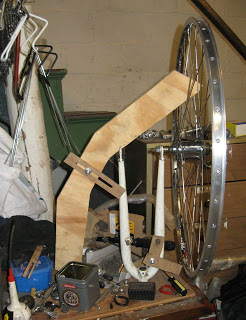Going back to Washington DC reminded me that Pittsburgh is a small city. That’s one of the reasons I like it here. I really enjoyed some aspects of DC and wish we had them here, but Pittsburgh is also better in some ways.
Here’s a bit of a comparison.
Public Transportation: DC Wins
The Metro just kicks butt. It’s convenient, goes “everywhere” (it seems), it runs regularly and tells you when to expect trains to come, and it’s very clean compared to most subways I’ve been on. There are also buses to get you where the train doesn’t.
Pittsburgh’s mass transit, on the other hand, is primarily bus-based. The buses are slow, usually late but always unpredictable, they drive poorly, and they almost never go where I want to go without transferring in downtown first. Believe it or not, we do have a few actual subway stops downtown, but most of the light rail is above ground and used for a few distant routes, instead of covering a wider area within the city. I won’t even get into the funding issues and periodic strikes.
Museums: DC Wins
DC wins primarily because all of the Smithsonian institute museums are free. It’s difficult to compare different collections of unique items, so for the most part I won’t try. But having the ability to walk into any museum any time is quite nice.
Pittsburgh has great museums with great collections, but apparently Andrew Carnegie was more interested in letting everyone into libraries for free, than museums.
Dinosaurs: Pittsburgh Wins
I said for the most part I wouldn’t compare museum collections, but in some areas there is a difference worth noting. DC has a much better collection of spacecraft and aircraft, for example. But the National Museum of Natural History’s collection of dinosaur fossils isn’t as large or well presented as the collection at Carnegie Museum of Natural History. DC has more mammal and non-dino fossils, but Pittsburgh wins in the dinosaur category.
We just opened a brand new dinosaur wing within the last few years, with some really nice, large displays. It’s a lot better than I remember from 15 or so years ago. We have at least 3 T-Rex’s, including one juvenile, and several huge plant eaters. The dinosaurs are displayed in appropriate chronology, not predators eating prey that’s been extinct for 10 million years. There’s also a large window into the actual fossil lab in the museum, where you can watch the technicians accidentally destroy irreplaceable specimens.
Sports:
Ha, just kidding! Same with newspapers.
Beer bars: Pittsburgh wins
See also my review of the Brickskeller. Maybe I just didn’t find the right place to buy beer in Washington DC, in which case I’d definitely accept a rematch. However, Sharp Edge is world class when it comes to Belgian beers on tap: I haven’t found anywhere else in any city with as many different good Belgians on tap.
Zoos: DC wins
The National Zoo is also free! You can walk in off the sidewalk like you’re entering Frick Park. Frick Park with Pandas, that is. People go to the zoo to jog or just generally hang out as you might do in any public park, it’s not just a trip destination. This would be a lot more convenient than the Pittsburgh Zoo, where you have to spend the whole day there just to make it worth the price of admission.
I generally don’t like zoos, but both the National Zoo and Pittsburgh Zoo are a lot better now than I remember zoos being when I was a kid. From outside appearances, at least, the old school “stark concrete enclosure” look is gone. Now they’re all “well-landscaped concrete enclosures.”
Transportation Bicycling: DC wins?
I seemed to see a lot more bicycles ridden and parked on the streets in DC, than I generally see in Pittsburgh. This seems to suggest more people in DC are riding for utility/transportation purposes instead of just recreationally. However, I really didn’t see enough to be sure, and I’m not sure how their cycling infrastructure (lanes, signage, driver awareness etc) is. They seemed to have a bike sharing/rental type program there, but I didn’t get any info on it.
Recreational Bicycling: Pittsburgh wins?
Okay, so maybe I wasn’t kidding about the sports.
Pittsburgh might win in the recreational department, for the same reason that DC might win in the Transportation department: Pittsburgh has more hills and is a smaller city. It’s a lot easier to get around in DC, but I’d expect it to be harder to find a long scenic route (meaning “all trees, no buildings”) in DC than in Pittsburgh. I’m not even sure where to start looking for a winding, hilly road in DC.
Both Pittsburgh and DC seem to have a lot of rail-trails down by the rivers. I’m not sure how DC’s in-city mountain biking opportunities are. We’re each on one end of the Great Allegheny Passage trail, but I’d guess DC wins for trail access due to our sections of missing trail before the Boston Bridge. DC also seems to have a larger, more visible tourist bike rental trade as well.
I’d really like to spend more time cycling around DC, because I think I’d get a much better idea of the place. We were only there on a weekend, but the traffic didn’t look that bad (except at the circles) and the streets seemed pretty wide.





